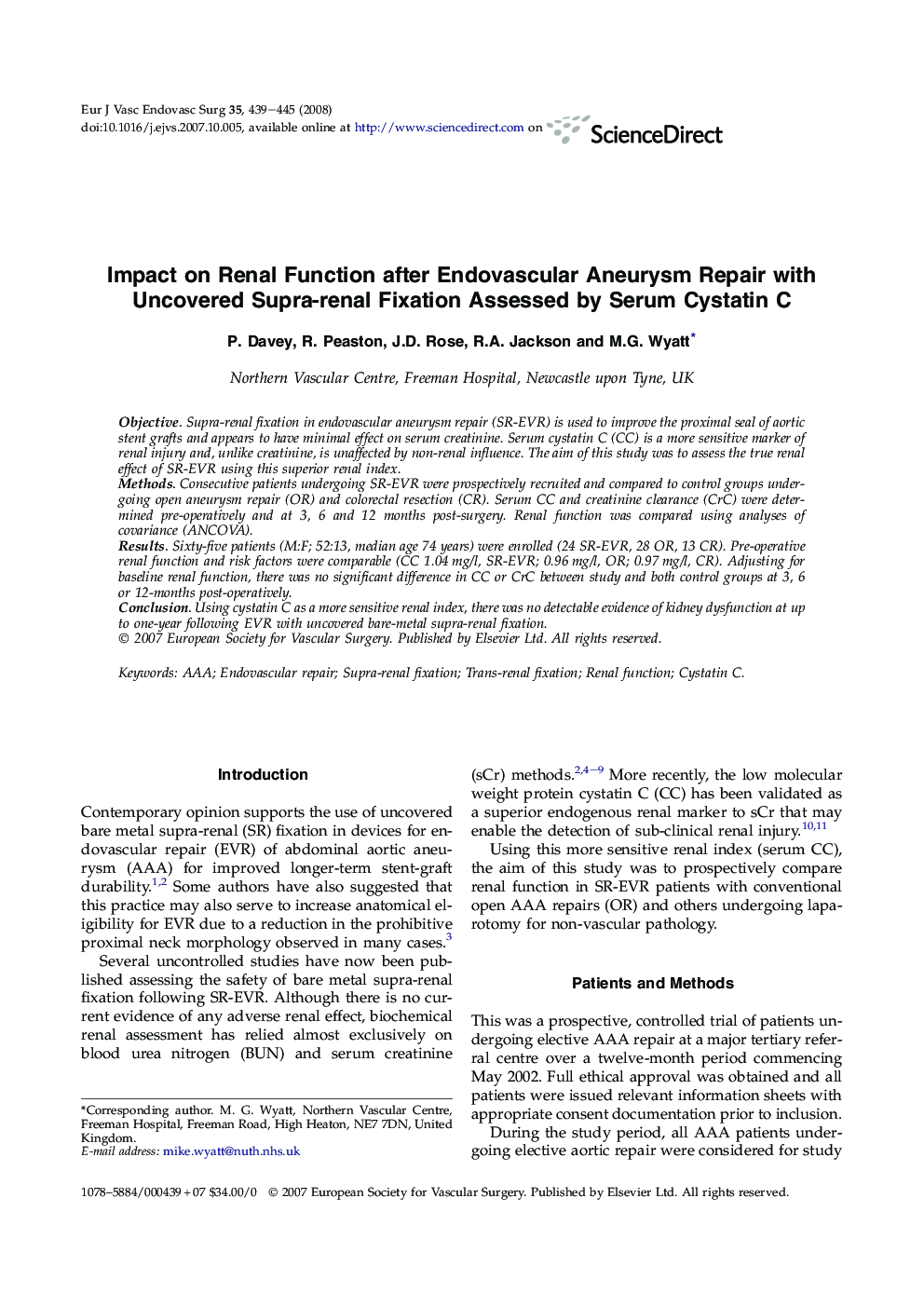| کد مقاله | کد نشریه | سال انتشار | مقاله انگلیسی | نسخه تمام متن |
|---|---|---|---|---|
| 2914015 | 1575532 | 2008 | 7 صفحه PDF | دانلود رایگان |

ObjectiveSupra-renal fixation in endovascular aneurysm repair (SR-EVR) is used to improve the proximal seal of aortic stent grafts and appears to have minimal effect on serum creatinine. Serum cystatin C (CC) is a more sensitive marker of renal injury and, unlike creatinine, is unaffected by non-renal influence. The aim of this study was to assess the true renal effect of SR-EVR using this superior renal index.MethodsConsecutive patients undergoing SR-EVR were prospectively recruited and compared to control groups undergoing open aneurysm repair (OR) and colorectal resection (CR). Serum CC and creatinine clearance (CrC) were determined pre-operatively and at 3, 6 and 12 months post-surgery. Renal function was compared using analyses of covariance (ANCOVA).ResultsSixty-five patients (M:F; 52:13, median age 74 years) were enrolled (24 SR-EVR, 28 OR, 13 CR). Pre-operative renal function and risk factors were comparable (CC 1.04 mg/l, SR-EVR; 0.96 mg/l, OR; 0.97 mg/l, CR). Adjusting for baseline renal function, there was no significant difference in CC or CrC between study and both control groups at 3, 6 or 12-months post-operatively.ConclusionUsing cystatin C as a more sensitive renal index, there was no detectable evidence of kidney dysfunction at up to one-year following EVR with uncovered bare-metal supra-renal fixation.
Journal: European Journal of Vascular and Endovascular Surgery - Volume 35, Issue 4, April 2008, Pages 439–445